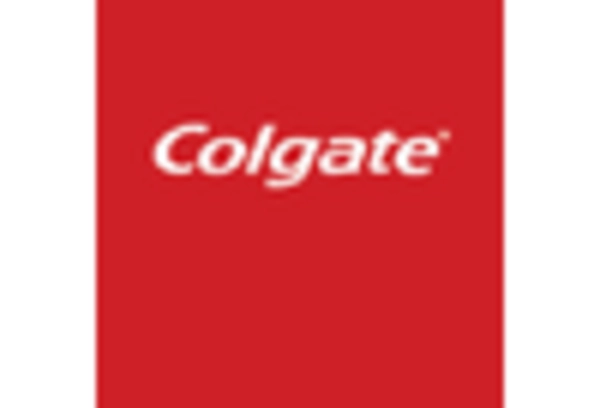Expansion of Retail Channels
The expansion of retail channels in Germany is facilitating greater access to halitosis treatment products. With the rise of e-commerce and the presence of specialized oral care stores, consumers can easily find and purchase a variety of treatments. This accessibility is crucial, as it allows individuals to explore different options, from mouthwashes to chewing gums designed to combat halitosis. In 2025, online sales are projected to account for approximately 25% of the total market share, reflecting a shift in consumer purchasing behavior. This trend is likely to enhance competition among brands, further driving innovation within the halitosis treatment market.
Rising Incidence of Halitosis
The prevalence of halitosis in Germany appears to be on the rise, contributing to the growth of the halitosis treatment market. Studies suggest that around 30% of the population experiences chronic bad breath, which has prompted a greater need for effective treatments. This increasing incidence is likely linked to lifestyle factors such as diet, smoking, and inadequate oral hygiene practices. As more individuals seek remedies for this condition, the market is expected to expand, with an estimated value reaching €200 million by the end of 2025. This trend underscores the necessity for innovative solutions in the halitosis treatment market.
Growing Awareness of Oral Hygiene
The increasing awareness of oral hygiene among the German population is a significant driver for the halitosis treatment market. As individuals become more informed about the implications of poor oral health, the demand for effective halitosis treatments rises. Educational campaigns by dental associations and health organizations have highlighted the importance of maintaining fresh breath, which has led to a surge in product sales. In 2025, the market is projected to grow by approximately 8% as consumers seek solutions to combat halitosis. This trend indicates a shift towards preventive care, where individuals are more proactive in addressing oral health issues, thereby expanding the halitosis treatment market.
Development of Innovative Products
The continuous development of innovative products is a key driver in the halitosis treatment market. Manufacturers are investing in research and development to create advanced formulations that address the root causes of bad breath. Innovations such as probiotics, which promote oral health by balancing the oral microbiome, are gaining traction among consumers. In 2025, the market for these innovative solutions is anticipated to grow significantly, with an expected increase of 15% in sales. This trend indicates a shift towards more effective and scientifically-backed treatments, which could redefine consumer expectations in the halitosis treatment market.
Influence of Social Media and Marketing
The influence of social media and targeted marketing strategies is reshaping consumer perceptions and choices in the halitosis treatment market. Brands are increasingly leveraging platforms like Instagram and Facebook to promote their products, showcasing testimonials and before-and-after results. This marketing approach resonates particularly with younger demographics, who are more likely to seek solutions for halitosis. As a result, the market is expected to see a growth rate of around 10% in 2025, driven by effective online campaigns. The ability to engage consumers through social media is likely to play a pivotal role in shaping the future of the halitosis treatment market.

















Leave a Comment